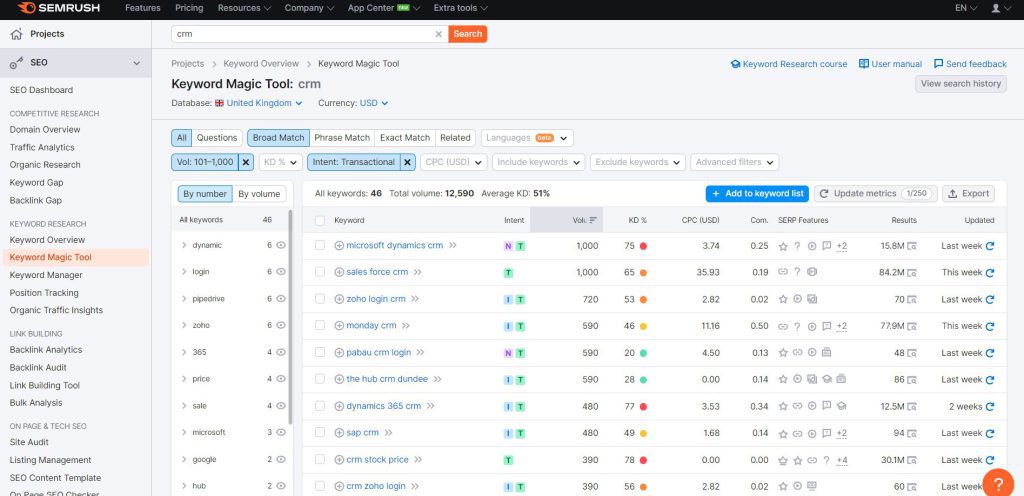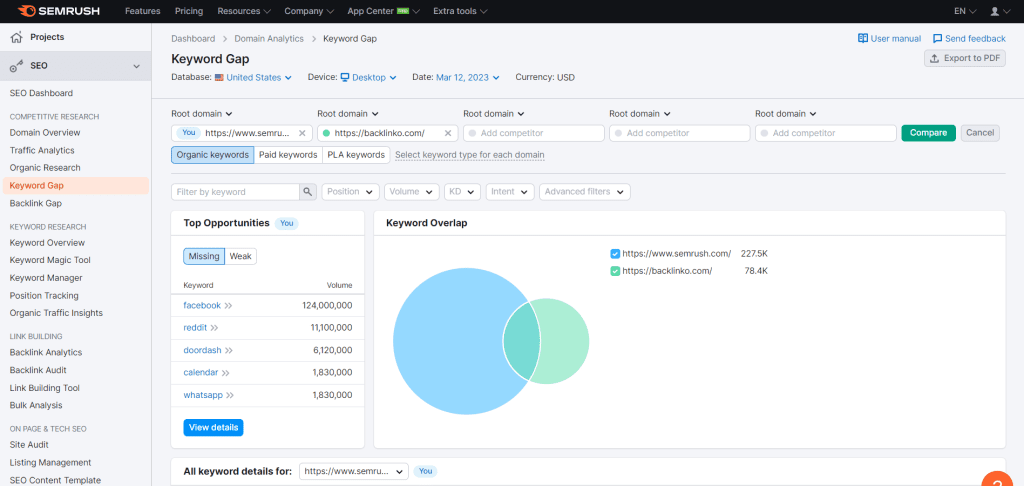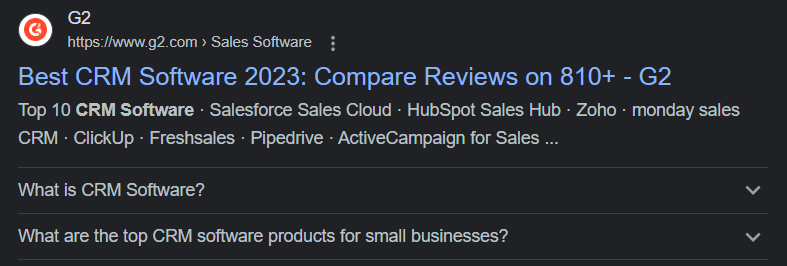13 SEO Best Practices for B2B Companies (2023)
For effective B2B results, do you follow these B2B SEO best practices?
In any B2B marketing plan, Search Engine Optimization (SEO) is a key component. As a result, businesses are able to attract more visitors to their websites, rank higher in search engine results, and eventually increase their lead and sales generation.
In this article, learn the best practices for B2B SEO as a beginner.
Table of Contents:
Keyword Research:
- Target Low-Volume, High-Value Keywords
- Low-Difficulty Keywords & Long-Tail Keyword Phrases
- Keyword gap analysis against your competitors
On-Page SEO
- Target Various Audience Groups
- Use Structured Data On Your Webpage
- Make SEO-friendly landing pages
- Optimize Metadata on Your Pages
Technical SEO
- Increase Page Speed
- Ensure the site is mobile-friendly
- Crawl and Fix GSC Issues
Off-Page SEO
- References to reliable, high-authority websites in your industry
- Leverage guest blogging or influencer marketing
- Fix Broken Links
Keyword Research for B2B SEO
Any B2B SEO campaign must start with keyword research.
This is researching the keywords and phrases your target audience or buyer persona uses to find goods and services similar to yours. When you focus on these keywords, you can increase your chances of appearing higher in search engine results. But how do you know which keywords to consider?
Follow these keyword research best practices for B2B SEO:
01. Target Low-Volume, High-Value Keywords
Unlike B2C, B2B brands have a limited amount of keywords to choose from when trying to rank for them.
First of all, Keyword research for B2C is simply ranking for specific short-tail, high-volume keywords. In contrast, in B2B, your target audiences are businesses or entrepreneurs. Hence, not a broad audience. That's why high-value keywords could also be long-tail ones with a lower search volume.
So, you must keep in mind, that the keywords should be relevant to the intent of your target audience. That is the fundamental element of keyword research. SEO tools such as Google Keyword Planner, Ahrefs, or SEMrush can help you identify high-volume keywords relevant to your business.
Read More : B2B SEO Tools: How to Choose the Best One for Your Business?(Opens in a new browser tab)
02. Transactional, Low-Difficulty Keywords & Long-Tail Keyword Phrases
High volume, popular vs. Low volume keywords: What to choose?
For B2B SEO, it's critical to rank for popular keyword searches, but focusing on low-volume keywords is even more crucial.
But, why focus on low-volume keywords? Here's why: Low-volume keywords provide you the exact searches of your target audience who are most interested in your material and what you have to offer. By experience, we have been able to boost B2B traffic with low-volume keywords rather than focusing on high-volume keywords.


Tip: Add the Keywords Everywhere chrome extension to your browser to get instant results on related keywords, people also ask, long tail keywords and more.
03. Keyword gap analysis
While using other B2B SEO techniques like keyword research and backlinks, keyword gap analysis is often neglected. Yet, if you want a reliable analysis of how your competitors are performing, you should conduct a keyword gap analysis.
But how do you do a keyword gap analysis?
The process of a keyword gap analysis is simple. With the help of SEO tools such as SEMrush and Ubersuggest, you can get all your competitors’ domain information. This covers the keywords they rank for to their visitor volume and top pages. When you're familiar with this, you can definitely try new tactics to level up.
Here's an example from the SEMrush keyword gap tool:


On-Page SEO Best Practices
Another essential element of B2B SEO is producing high-quality, interesting content.
The benefits of content creation are:
- Increase traffic to your website.
- Position your company as an authority in your field and eventually produce more leads and sales by producing content that is relevant to your target audience.
04. Target Multiple Audience Groups
You are not targeting businesses from one specific industry. This is because your B2B audience could range from multiple industries for a variety of reasons.
Because of this, you should create content and keywords that address the following for the audience you're trying to reach:
- What are their pain points? What issues require solutions?
- What do they require from your product or service? Why are they conducting an online search?
- Location: Do customers in various locations or nations have access to a variety of your products?
- Hopes and dreams: What do you want customers to get out of using your product or service?
- Commonly asked questions: It is your responsibility to anticipate and respond to each member's unique inquiries in a buying group.
You can reach a broad audience of B2B buying groups if you take these factors into account while planning your content strategy.
05. Update On-Page SEO ranking Elements
Here are some of the key on-page SEO elements that should be optimized:
- Meta Tags - both the meta title and the meta description must include keywords. Keep them brief, concise and straightforward.
- H1 - Should include the keyword and only one H1 for each page.
- Images - All images should be 100KB or less. Consider the WEBP format.
- URL – A clean URL excluding any special characters and must be within 60 characters.
- Internal linking- Make sure all pages are linked to one another. Avoid orphan pages.
06. Use Structured Data On Your Webpage
Structured data enables search engines to comprehend the data that is accessible on your website. This includes information on things like product names, descriptions, costs, ratings, and reviews, among other things. These signals are used by search engine algorithms to gauge how pertinent your website is to a given query. It's simpler for Googlebot to crawl and index your pages if your website has structured data.
More users will find your business while searching for related services and products before your competition, once Google understands what your webpage is about.
Here's an example of article-type structured data:


07. Make SEO-friendly landing pages
Landing page optimization is the pinnacle of SEO tactics. That essentially determines whether you are going to generate more leads than you currently do. Landing page creation is really simple and only involves a few steps. The headline of your optimized landing page should be engaging and relevant to your call to action, followed by an offer and a succinct benefit summary.
On your website, each landing page should serve a distinct function. If you try to sell various products to your visitors on the same landing page, they can become confused, which will result in a loss of leads.
After deciding on your goal, you can include graphics, logos, or even animations to make your page more engaging. Just be sure to avoid clutter. Inconsistent content, consumer distraction, and lower conversion rates are all consequences of a busy page. Be sure to underline the advantages you are presenting while remaining concise and engaging.
Technical SEO
08. Site Speed Optimization
Page speed is a crucial factor in B2B SEO; thus you cannot afford to overlook it. Even if your material is the best available, if it takes a long time to load, your ranking potential will suffer significantly. A slow page is the worst thing that can happen from the user's perspective, and if your page doesn't load within the first few seconds of being opened, the user won't hesitate to leave.
If you're not sure where to begin with page performance optimization, think about optimizing images, enabling browser caching, and lowering server response times. There are other tools available to increase page speed, such as GTMetrix or Google PageSpeed Insights if you require additional assistance. Although accelerating upload times can be confusing, doing so can ultimately boost your B2B SEO.
09. Ensure the site is mobile-friendly.
As most search engine users are on mobile devices, your site must be mobile-friendly in order to rank as well in Google's mobile-first index as you do on a desktop. You can start with simple yet significant adjustments, including checking to determine if your website is mobile-friendly.
On a mobile device, actions like completing a form, checking out, or initiating a chat session should be just as quick and dependable as they are on a computer. To maximize mobile conversions, you should also make design adjustments to ensure that all of your calls to action are visible and placed appropriately. Your mobile leads will decrease considerably if these elements are not responsive on mobile.
Prioritize having a mobile-responsive, mobile-friendly website when planning your next design change, and you'll undoubtedly notice better organic search ranks on Google's mobile-first index.
10. Crawl often and address website problems
Investing in a crawler to periodically inspect your site is a fantastic idea to make sure that it is operating at peak efficiency. Simply put, a crawler is a bot that scans your entire website for content before indexing or ranking your web pages in search engines.
While the crawler browses your website, it will highlight problems as it finds them. You will receive information on the health and visibility of your SEO as well as on problems like duplicate content, broken links, erroneous titles, and others. Screaming Frog is a fantastic illustration of a quick, leading-edge crawler that boosts SEO by retrieving data and checking for any problems.
Google Search Console can also be used to re-crawl your website. By adding URLs to Google's crawl queue and adding a sitemap including the URLs you want Google to crawl and index, you can inform Google whether you have updated your site's older issues.
Basically, a sitemap is a list of all the pages, videos, and files on your website. By producing one, search engines will be able to read it and crawl your website more quickly. For instance, a sitemap provides useful information on significant pages and files on your website and informs search engines like Google about them.
Read More : SEO Company - How To Choose The Best in 2023
Link Building for B2B SEO
B2B SEO also includes link building, which is crucial. Your website's domain authority can be raised, which will boost your chances of appearing higher in search engine results.
11. References to reliable, high-authority websites in your industry
Increase your website's reliability and dependability by making references to other reliable websites in your blog entries. In every single business, there are well-known websites that are regarded as authorities. Connecting to these websites helps your website become known as a source of trustworthy content while also providing your reader with more information to reference.
Always look at the domain authority before linking to a website (the scale is 1-100 with 100 being the best). Generally, a score of 40 or above is regarded as normal or acceptable, and a score of 60 or more as superb! If the post you're linking to is under 40, don't worry. Simply said, you're seeking well-known, reputable, and well-established websites.
12. Leverage guest blogging or influencer marketing
Use blogging and Influencer Marketing to establish your authority and credibility.
According to Authority Hacker, guest blogging is the preferred tactic for link building. Blogging will become your best buddy in terms of maximizing your B2B SEO efforts. The most effective technique to make your company a thought leader and give your website credibility is by blogging. And we understand that posting every other week may be tempting because writing takes time and might be difficult, but volume and consistency are more important.
When you show Google that your website is active and relevant, it will elevate your position and help you reach more people. Try to write twice a week on your website's blog page.
13. Fix Broken Links
Building broken links is a B2B SEO tactic that works off-page and can benefit both your website and the broken link's host. In order to avoid keeping a broken link on your website, the strategy involves contacting webmasters and suggesting backlinking to your website.
Broken links can appear for a number of reasons, including when the destination website deletes the connected page, when the destination website moves or disappears, and more. Broken link campaigns, for whatever cause, are a simple and low-effort technique to increase the number of backlinks. You are assisting the site by fixing the broken link, which is advantageous because broken links can hurt a site's SEO. (And when pitching webmasters to update broken links, be sure to emphasize this crucial issue!)
Google Search Console can also be used to re-crawl your website. By adding URLs to Google's crawl queue and adding a sitemap including the URLs you want Google to crawl and index, you can inform Google whether you have updated your site's older issues.
Tip: Screaming Frog is a great tool to identify the prevailing issues, the pages with issues and more.
Conclusion
In conclusion, B2B SEO is an essential part of any effective marketing plan. You can increase your chances of ranking higher in search engine results pages, draw more traffic to your website, and eventually increase the number of leads and sales by carrying out efficient keyword research, producing high-quality content, and constructing high-quality backlinks. You may unlock the full potential of B2B SEO and advance your company by adhering to the best practices described in this article.
Read More: Enterprise SEO: Tips to Unlock the Potential of Your Business in 2023
FAQ
01. Target Low-Volume, High-Value Keywords
02. Transactional, Low-Difficulty Keywords & Long-Tail Keyword Phrases
03. Keyword gap analysis
04. Target Multiple Audience Groups
05. Update On-Page SEO ranking Elements
06. Use Structured Data On Your Webpage
07. Make SEO-friendly landing pages
08. Site Speed Optimization
09. Ensure the site is mobile-friendly
10. Crawl often and address website problems
11. References to reliable, high-authority websites in your industry
12. Leverage guest blogging or influencer marketing
13. Fix Broken Links
There are several benefits of SEO services for B2B.
These are :
01. Boost organic traffic and online visibility, in return increase sales and revenue.
02. Lead generation and reach the target customers who are in search of your products and services.
03. Competitve advantage over competitors who are weak in their SEO game.
04. Cost-effective marketing as it provides long term return on investment (ROI).




